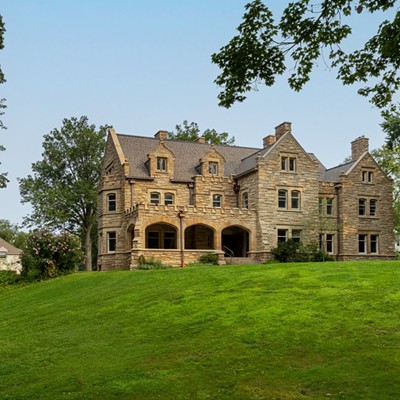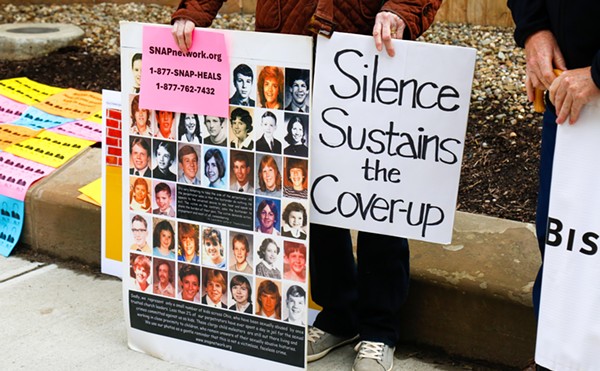
More than a dozen people milled around in crypt-like hallways of the Statehouse basement Wednesday morning. They’d shown up almost an hour early for the first hearing of Ohio House Joint Resolution 1, a proposal which would require 60% of the vote to pass constitutional amendments.
Rep. Brian Stewart, R-Ashville, brought forward a similar proposal in the waning days of the last general assembly. That effort fell short, but he promised to try again.
Organizers criticize the higher threshold as subverting a century-old democratic right, a craven attempt to forestall amendments related to abortion and redistricting, and just plain old short-sighted.
The new resolution carries a pair of even more stringent provisions. Stewart explained the additions in January alongside a couple dozen co-sponsors.
“The new version would require that signatures come from all 88 counties instead of just 44,” Stewart said. “If an amendment is going to apply to every Ohio and then every community should have a hand in putting that potential constitution amendment on the ballot.”
In addition to that signature gathering hurdle, Stewart added another. His measure eliminates the “cure” period in which organizers can collect additional signatures if they fall short.
Pre-hearing wrangling
Tussling over Wednesday’s hearing began even before people filled the halls or Stewart entered the room. In an email Monday, committee chair Rep. Scott Wiggam, R-Wayne County, took the unusual step of placing time limits on sponsor testimony and lawmakers’ questions. Relevant for future hearings, he also put limits the number of in-person speakers, how long they could talk, and made all public testimony invite-only.
Shortly before the hearing Wiggam’s staffers sent around an update — the time limit on lawmaker questions would go from five minutes per person to ten.
The Ohio Voter Rights Coalition was quick to push back, accusing committee leaders of rushing the process.
“These new, last minute committee rules silence Ohioans and deny the public the opportunity to participate, effectively shutting off debate on the undemocratic, unnecessary bill aimed at undermining the sacred principle of ‘one person, one vote,’” they wrote.
“We find it alarming that lawmakers would believe such a manufactured way of completing hearings would result in an accurate representation of the will of the people,” they wrote.
Separately, Senate President Matt Huffman floated the possibility of advancing HJR 1 to the ballot in an August special election. Just over three months ago, lawmakers eliminated such elections — contending they’re expensive and don’t generate enough voter turnout.
Catherine Turcer, of Common Cause Ohio, argued Huffman is attempting to “play games” with the Ohio Constitution.
“It is inappropriate to cherry-pick an election in August which is likely to have poor voter turnout,” Turcer argued. “For more than 100 years, Ohioans have had the right to come together, gather enough signatures, and place a proposal on the ballot.”
“Citizen-led ballot measures aren’t overused,” she added. “We haven’t had one on the ballot since 2018. It’s unnecessary to make the process more complicated and it’s disrespectful of voters.”
Stewart’s introduction
Rep. Stewart explained his updated resolution, and the underlying motivation for his effort in much the same way he has before. He did, however, add a few new examples, leaning on the recent boogeymen of Ohio politics.
Stewart argued it would be “absurd” for Norfolk Southern to advance a U.S. Constitutional amendment friendly to the industry. And yet, Stewart argued, corporate interests do the same thing in Ohio “year, after year, after year.”
As Turcer noted, the last citizen-initiated amendment was in 2018.
Stewart pointed as well to Larry Householder leveraging dark money to bring forward a cleverly worded term-limits amendment. That amendment could’ve given the disgraced former speaker as many as 16 more years with the gavel.
“This brazen attempt to buy a speaker for life amendment to Ohio’s constitution was thwarted only by indictment,” Stewart argued.
But at root, Stewart’s argument is the same one he’s made from the start.
“If any outside group believes its ideas worthy of inclusion in Ohio’s constitution,” Stewart said, “then it should be able to earn the widespread support that a 60% margin will require.”
“Stated simply,” he added, “under the Ohio Constitution Protection Amendment, good ideas will pass.”
Faux outrage?
It would be difficult to overstate how emphatically Democratic members rejected Stewart’s argument.
“HJR1 is undemocratic, unpopular, unfair,” Rep. Ismail Mohamed, R-Columbus said in an opening statement.
He added it “means more power to out of touch politicians and less power to all of us voters to decide the issues that matter most.”
Rep. Bride Rose Sweeney, D-Westlake, kicked off questions by highlighting contradictions.
If Stewart’s biggest concern is out-of-state special interests, she pressed, why was the only supporter to show up last year speaking on behalf of an out of state special interest? If lawmakers just eliminated August special elections, she asked, why are leaders floating that approach for his resolution? And if his intent was to protect the constitution, why did Stewart send around a memo to GOP colleagues depicting the resolution as a way to beat back future abortion rights and redistricting amendments?
Supporters and timing are outside his control, Stewart contended. As for the memo, Stewart drew a distinction — he didn’t ever say abortion and redistricting were his chief issues. At this Democratic committee members held up print outs of the memo. Instead, Stewart argued, he was only highlighting the chief issues raised by opponents.
“Candidly, spare me the faux outrage over a legislator trying to win the support of colleagues in the legislature,” he said. “If I’m trying to win the support of a member who’s a farmer, I’m going to talk about how the bill is helpful to farmers.”
OCJ reporting has shown LaRose and Stewart were looking to leverage the “life community” even before the first resolution’s draft language was complete.
And Stewart pushed back on the contention, leveled by Sweeney and others, that Republicans are rushing the process.
“We’ve now had going on five months to debate a resolution that frankly, everybody understands,” he said. “Nobody’s confused about what HJR 1 does.”
What HJR 1 doesn’t do
Democrats on the committee repeatedly criticized Stewart’s proposal for failing to achieve his stated ends.
“You talk a lot about keeping outsiders from influencing the Ohio constitution,” Rep. Dontavius Jarrells, D-Columbus, pointed out.
He noted those interests outside of Ohio can’t cast a ballot — their only means of influencing an election is political spending.
“But this amendment doesn’t stop dark money from coming into an amendment ballot petition drive, right?”
Stewart acknowledged dark money is “a concern,” but seemingly treated it as a separate issue.
Explaining the inclusion of his new more stringent provisions, Stewart chalked it up to the legislative process. He argued without Democratic input on his previous resolution, he polled his own caucus, and it turned out some argued for higher hurdles.
“I don’t think signature gatherers go to Darke County, they don’t go to Holmes County, they don’t go to Noble County,” Stewart said, “why shouldn’t they?”
The rhetorical basis for Stewart’s previous and current resolution borrows from an idea advanced by the constitutional modernization commission. But multiple people have noted how it conveniently leaves out one half of the equation. That proposal paired a higher constitutional threshold with lower requirements for initiated statutes and a safe harbor provision to prevent lawmakers from undermining laws passed at the ballot box.
None of those ideas, however, made it into Stewart’s resolution.
“I think the question is for them,” Stewart argued after the hearing, “why didn’t they offer amendments? I can’t speak for them.”
Originally published by the Ohio Capital Journal. Republished here with permission.










